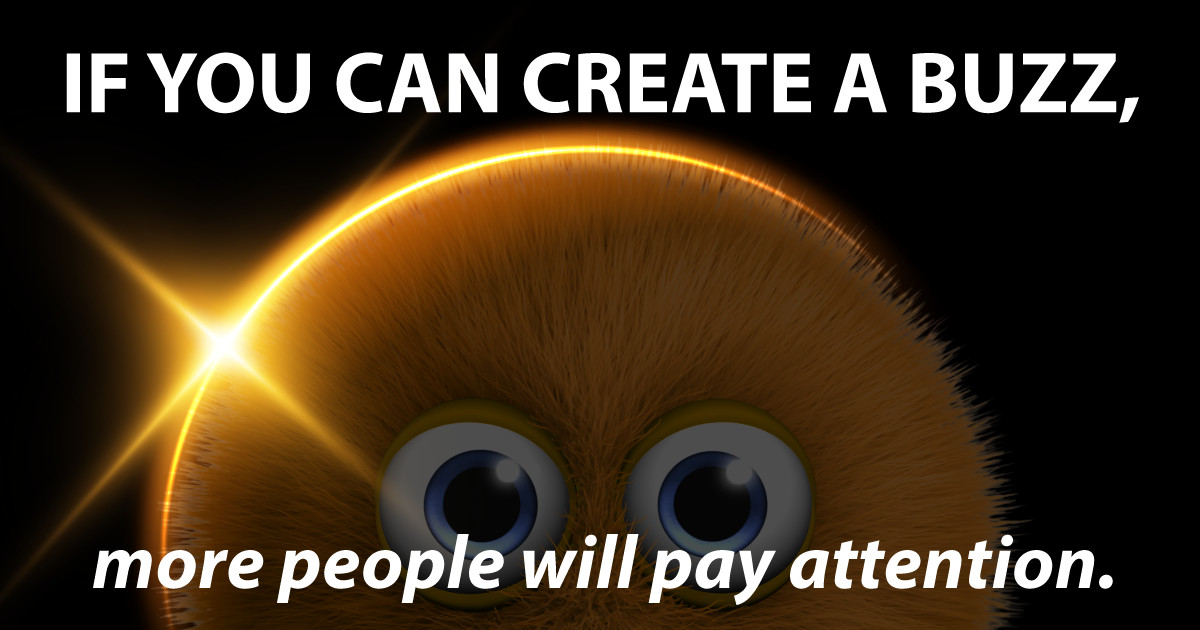
It’s hard not to get caught up in a buzz that surrounds you.
The 2024 total solar eclipse happens Monday, and my hometown happens to be in the right place to see it all. It’s a big deal around here. Supposedly a “once-in-a-lifetime” experience* that we’ve been hearing about for the last few months now.
Since this week was my turn to write a post for Shared iDiz, I’ve decided to focus on the “buzz” surrounding this event, from a marketing viewpoint. Is it truly a “once-in-a-lifetime” experience? Will the actual event live up to expectations of the pre-eclipse press and promotions?
BEFORE: The buzz is building
I’m usually not someone that gets caught up in a lot of hype. But I am getting excited about seeing the eclipse. When I googled more info on the eclipse, I was even more impressed. The sun (870,000 miles wide and 90 million miles away) gets completely blocked by our moon (2,100 miles wide and 240,000 miles away). If the sun was bigger/closer, or if the moon was smaller/farther away, a total eclipse doesn’t happen. Plus, it will be 2044 before a total solar eclipse will be seen again in the United States.
Local authorities are already warning us that our population could triple over the weekend because of visitors coming to experience the eclipse. Schools are closed for the day and businesses are closing early. Baseball team practices have been called off to avoid traffic jams. Transportation officials are warning people not to simply pull over to the side of the roads during the eclipse. Naturalists are telling us that birds, animals and insects might do even crazier things than people might do. Meanwhile, every business either seems to be handing out eclipse viewing glasses, or selling some kind of special eclipse product, from tees and popcorn to beer and bourbon.
The local community park where I volunteer is even holding a free viewing event for locals that don’t want to risk traffic jams to travel to one of several ticketed events in the area. That’s where I’ll be spending most of Monday, so you can bet I’m keeping a close eye on the extended weather forecast and keeping my fingers crossed for clear skies, in hopes for a once-in-a-lifetime experience for everyone that comes to the park.
AFTER: What really happened
While our community park wasn’t as packed as the 40-50K people that went to the Indianapolis Motor Speedway, we did have about 200 visitors for the eclipse, some of them traveling from states a few hundred miles away. It was fun to listen to the excited chatter of groups walking by our lawn chairs, carrying their own chairs, blankets and picnic baskets. And it was interesting to see how most people gathered in their own little clusters, spacing themselves apart across the open baseball field. Of course, a lot of families were happy to take advantage of the playground, smartly letting their kids burn off extra energy while waiting for the big event.
As the eclipse started, everyone did the occasional eclipse viewer check on its progress, reporting to the rest of their cluster just how much of the sun had been overlapped. I was surprised at how bright the day continued to be, regardless of how much sun was blocked. It wasn’t until the last top left crescent became even more thinner that the daylight noticeably changed. Shadows deepened. Friends sitting near you looked like they were sitting outside at midnight. Streetlights down the road started coming on. A confused bat flitted around over the crowd.
Then it was totality.
Gasps and exclamations happened all at once. Then everyone was speechless. After a bit, a few softer conversations could be heard as people talked to their friends. For almost four minutes, everyone could look at the sun without protection, staring at this thin glow of white around a black dot. Finally a flare broke out at the bottom right, causing people to hurriedly put their viewing glasses back on, then sitting back and watching as the moon appeared to travel across the sun. Some people then packed up and left, while others took their time to enjoy being outdoors with their friends.
It truly was kind of magical. There seemed to be some blend of awe and inner peacefulness that everyone felt, experiencing this “once-in-a-lifetime” phenomenon together.
For once, I think the buzz lived up to its hype.
As marketing people, we understand why things tend to get hyped up. If you can create a buzz about something, more people will pay attention. The more people that pay attention, the greater chance that it will take off, becoming both established and profitable for the client.
But we also understand that buzz can backfire. Too much hype and you can raise expectations too high. Too much exaggeration and you lose credibility. So you need to be sure that what you are promoting actually fits the hype you are proposing.
At least now I have a reference as to what is truly a “once-in-a-lifetime” event.
*Even if it isn’t literally once-in-a-lifetime event. Yes, it will be 2044 before the next total solar eclipse will be seen in the United States, but it actually happens every 18 months somewhere on Earth, in case you are making future travel plans.
- Why your CU really needs an intranet - February 19, 2025
- Are you scared yet? - October 22, 2024
- OMG! Who really IS our competition?!? - September 24, 2024
